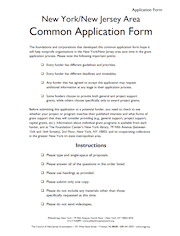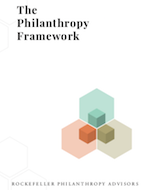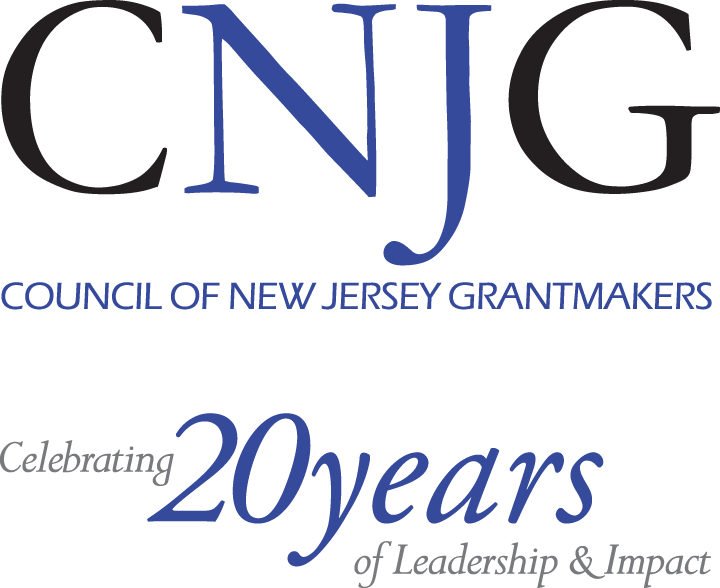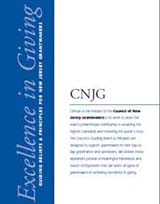Site Search
- resource provided by the Forum Network Knowledgebase.
Search Tip: Search with " " to find exact matches.

These resources are from CNJG's 2016 Annual Meeting & Holiday Luncheon where the topic of shifting demographics was explored. Research by the Pew Research Center shows that New Jersey, and the nation, is experiencing the most striking social, racial, economic, and demographic shifts that have not been seen in more than a century. Funders will need to address the new challenges this “next America” will face, including an increasing aging population, greater racial tapestry, the influence of religion and technology, and more.
New Jersey Organizations and Resources
- American Red Cross – Chapters covering the State of New Jersey
- State of New Jersey Catholic Charities - Diocese of Camden - Diocese of Trenton
- Community Emergency Response Teams provides opportunity for citizen volunteers to be involved in emergency management activities.
- Community Food Bank of New Jersey
- Goodwill NY NJ
- Jersey Cares recruits and engages volunteers in efforts that address community-identified needs.
- NJ 2-1-1 helps people find solutions to personal needs by informing them of resources in their community.
- NJ Department of Human Services: Disasters & Emergencies - Help & Information
- Pass It Along, an affiliate of the Hands on Network, recruits and engages volunteers.
- The Salvation Army - New Jersey Division
- Volunteer Center of Bergen County, Inc.
- Volunteer Lawyer’s for Justice - Provides legal support to New Jersey residents.
- United Way of Greater Philadelphia and Southern New Jersey
Nationwide Organizations and Resources
- American Institute for Conservation—Collections Emergency Response Team (AIC-CERT)
Offers free emergency response assistance to cultural organizations with collections. AIC-CERT is supported and managed by the Foundation of the American Institute for Conservation (FAIC) and consists of a force of 107 “rapid responders” trained to assess damage and initiate salvage of cultural collections after a disaster has occurred. - American Red Cross - Disaster Recovery Guides
- BBB Wise Giving Alliance
The BBB Wise Giving Alliance helps donors make informed giving decisions and advances high standards of conduct among organizations that solicit contributions from the public. - Center for Disaster Philanthropy
The when, where, and how of informed disaster giving - Center for International Disaster Information (CIDI)
Provides individuals, groups, embassies and corporations with information and guidance in support of appropriate international disaster relief efforts. - CERF+ Artists’ Relief Exchange along with its partners in the National Coalition for Arts Preparedness and Emergency Response are committed to providing and connected people to emergency relief.
- FEMA
Information from the Federal Emergency Management Agency - FEMA Geo Portal
This portal provides geospatial data and analytics in support of emergency management - FEMA - National Disaster Recovery Framework
This guide provides a flexible structure that enables disaster recovery managers to operate in a unified and collaborative manner to provide effective recovery support to disaster-impacted jurisdictions. - Guide to Navigating FEMA and SBA Disaster Aid for Cultural Institutions
- The Tsunami Learning Project: Lessons for Grantmakers in Natural Disaster Response
This guide, published by Grantmakers Without Borders, offers new tools for grantmakers when responding to natural disasters. - IRS Disaster Relief Resources for Charities and Contributors
In the aftermath of a disaster or in other emergency hardship situations, individuals, employers and corporations often are interested in providing assistance to victims through a charitable organization. The IRS provides a number of resources to help those involved in providing disaster relief through charities. - Disaster Relief, Providing Assistance Through Charitable Organizations
IRS Publication 3833 describes how members of the public can use charitable organizations to provide assistance to victims of disasters or other emergency hardship situations. - Emergency Drying Procedures for Water Damaged Collections
A guide from the Library of Congress - Preparation & Response for Cultural Institutions
A guide from the National Trust for Historical Preservation. - Small Business Administration
Learn about and apply for SBA Disaster Loans for business of all sizes – private and nonprofit
A sample conflict of interest form for independent private foundations.

Rockefeller Philanthropy Advisors has released The Philanthropy Framework, a tool for analysis and planning to guide emerging and established philanthropies to better align resources for maximum impact. Created with input from leaders from more than 50 foundations worldwide, the tool seeks to address fundamental changes in philanthropy and the world such as generational shifts in attitudes, massive wealth creation, diversity of capital, new models for impact, and new operating environments among others.
It lays out three core elements for philanthropists to consider when determining how to maximize their impact:
- Charter, the organization’s scope, form of governance, and decision-making protocol
- Social Compact, its implicit or explicit agreement with society about the value it will create
- Operating Model, the approach to the resources, structures and systems needed to implement strategy.
An overview on the self-dealing law, including definitions, common problem areas, exceptions, penalties, and resources.
Media Impact Funders partnered with Harvard University’s Shorenstein Center on Media, Politics and Public Policy to produce this case study report that surfaces pioneering funding practices in journalism.
As the field of journalism continues to grapple with limited resources and dwindling revenues, it’s clear that financial support is needed now more than ever. Philanthropy, in response to the radically changing landscape, is stepping up to revive quality journalism and reconfigure the news media ecosystem. And, in fact, funding for nonprofit news media has seen a notable uptick in philanthropic support, oftentimes in the form of new types of grants.
Key takeaways from the case studies include:
- The Einhorn Family Charitable Trust, a foundation that doesn’t have a history of journalism funding, made a four-year investment to help launch the Solutions Journalism Network (SJN).
- The LOR Foundation, fearing residents in the Intermountain West did not have access to quality news, decided to partner with SJN on the local level to produce solutions-based news for the region.
- The Ford Foundation supported the hiring of an investigative reporter at the ACLU of Michigan—the first investigative reporter of any ACLU chapter—to dig into the water crisis in Flint, Michigan.
- The California Endowment invested in youth media hubs as a means to promote community health, well-being and empowerment.
- The MacArthur Foundation made a pioneering unrestricted, five-year grant to the Pulitzer Center on Crisis Reporting, which helped the nonprofit newsroom experiment and innovate.
 CNJG celebrates its 20th anniversary in 2017 marked by extraordinary progress and service to members over this time. As the nexus for the philanthropic community in New Jersey, the Council of New Jersey Grantmakers’ body of work grows more robust every year. This is clearly evident by the exponential growth in programs and services since CNJG was founded in 1987. However, this proliferation in programs and services does not reflect the full realm of CNJG's transformation over twenty years. CNJG has evolved to become a leader in the state, spearheading important and significant initiatives throughout our history.
CNJG celebrates its 20th anniversary in 2017 marked by extraordinary progress and service to members over this time. As the nexus for the philanthropic community in New Jersey, the Council of New Jersey Grantmakers’ body of work grows more robust every year. This is clearly evident by the exponential growth in programs and services since CNJG was founded in 1987. However, this proliferation in programs and services does not reflect the full realm of CNJG's transformation over twenty years. CNJG has evolved to become a leader in the state, spearheading important and significant initiatives throughout our history.
These programs, services and leadership initiatives elevate, not only our members’ work and practice, but also grantmakers throughout New Jersey, and even beyond. CNJG's success stems from its ability to broker partnerships and alliances to solve problems, leverage shared resources, and forge sustainable solutions to bring about long-term change. During its 20 years, CNJG has grown to become a valuable, highly relevant leadership organization serving a diverse range of funders. View our CNJG Through the Years pictorial. CNJG thanks our members and partners for your ongoing support and leadership that has propelled us through the last 20 years. We look forward to the next twenty!
Newark Philanthropic Liaison
Philanthropy has played a vital role in Newark for decades. In 2007, in collaboration with the Office of the Mayor, CNJG hired the city’s first liaison – modeled after a similar position in the State of Michigan – to harness interest, foster greater effectiveness and attract resources toward policy and programmatic areas that affect Newark’s residents. In the years since, the Council’s Newark Philanthropic Liaison has become a model for the country.
Hurricane Sandy Response
Superstorm Sandy officially came ashore in New Jersey on October 29, 2012 at 8:00 p.m. and its aftermath continues to be felt in communities throughout our state. Not 24 hours after the storm made landfall, CNJG began planning a series of actions to help inform funders what to be prepared for, share information and discuss strategies. CNJG's support of the philanthropic community as it navigates the shifting landscape of disaster recovery, continues.
Facing Our Future
Facing Our Future was a landmark initiative looking at the systemic, long term fiscal challenges facing all levels of government in New Jersey. It grew out of a 2010 briefing CNJG held for members that outlined how a Governor’s budget is annually crafted. CNJG leadership worked with members to convene a group of enthusiastic former government leaders. Their collective experience crossed party lines, and many of them had served multiple New Jersey governors. This Leadership Group included 4 former Attorney Generals, 3, former Commissioners, 2 former State Treasurers, a former Director of the State Senate and a former Chief Justice of the NJ Supreme Court, in addition to leading New Jersey researchers.
Establishing South Jersey’s Community Foundation
The Community Foundation of South Jersey formally launched in 2009 after two years of extensive planning through the efforts of CNJG and a number Council members. CFSJ is dedicated to the southernmost counties of New Jersey - Atlantic, Burlington, Camden, Cape May, Cumberland, Gloucester, Ocean, and Salem. These counties are exceptionally diverse, stretching from rural farm lands to pockets of densely populated and poor urban areas, juxtaposed against wealthy suburban communities. However, they share many of the same social problems – a challenging economy, unengaged youth, access to healthcare, as well as issues related to hunger, unemployment and housing. Realizing the need, Council members through the work of CNJG formed The Community Foundation of South Jersey. CNJG is extremely proud to have played a role in building the foundation to serve South Jersey for generations to come.
Spring Colloquium
Held for the first time in 2008, CNJG's Spring Colloquium focuses on critical trends and issues affecting foundations and the people and communities they serve. Past discussions have featured Governor Tom Kean with US Editor for the Economist Matthew Bishop, writer David Borestein and philosopher Anthony Appiah, and Idealist.org founder Ami Dar with Cindy Rizzo of the Arcus Foundation.
Spring Conference
CNJG's Conference for Grantmakers brings together staff and trustees of all types and sizes of foundations for a day of networking and focused sessions dealing with key aspects of grantmaking, leadership, and management and operations.
Foundations Facilitate Diversity, Equity, and Inclusion: Partnering with Community and Nonprofits, a new report by the OMG Center for Collaborative Learning, confirms that foundations can, in fact, facilitate diversity, equity, and inclusion (DEI) through their grantmaking processes and their partnerships with nonprofits—and identifies eight specific practices for foundations to emulate.
The report takes a deep dive into the work of nine foundations that represent a diverse cross-section of types and sizes, and offers useful lessons about how foundations can better partner with nonprofits to be more effective in their work.

Capacity building enables nonprofit leaders and organizations to develop the skills and resources they need to improve their work. Since each situation is unique and circumstances are always changing, effective capacity-building support is tailored to best suit the needs of grantees. This publication offers practical guidance and considerations to help grantmakers design an impactful approach.
This toolkit includes a number of tools for Steering Committee Working Groups as they form, determine strategic direction, develop implementation plans, and identify measurement indicators. This toolkit includes a description of working group member responsibilities, an action planning template, and sample instructions for the development of indicators. The tools have been generalized to be applicable across contexts; however, because no two collective impact efforts are the same, these resources should be considered a starting place to be tailored to the unique circumstances of each initiative.
